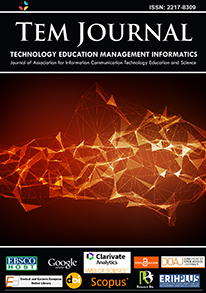WSNet – Convolutional Neural Networkbased Word Spotting for Arabic and English Handwritten Documents
WSNet – Convolutional Neural Networkbased Word Spotting for Arabic and English Handwritten Documents
Author(s): Hanadi Hassen Mohammed, Nandhini Subramanian, Somaya Al-maadeed, Ahmed BouridaneSubject(s): ICT Information and Communications Technologies
Published by: UIKTEN - Association for Information Communication Technology Education and Science
Keywords: Word spotting; Deep learning; Word recognition; Arabic word spotting;
Summary/Abstract: This paper proposes a new convolutional neural network architecture to tackle the problem of word spotting in handwritten documents. A Deep learning approach using a novel Convolutional Neural Network is developed for the recognition of the words in historical handwritten documents. This includes a pre-processing step to re-size all the images to a fixed size. These images are then fed to the CNN for training. The proposed network shows promising results for both Arabic and English and both modern and historical documents. Four datasets – IFN/ENIT, Visual Media Lab – Historical Documents (VML-HD), George Washington and IAM datasets – have been used for evaluation. It is observed that the mean average precision for the George Washington dataset is 99.6%, outperforming other state-of-the-art methods. Historical documents in Arabic are known for being complex to work with; this model shows good results for the Arabic datasets, as well. This indicates that the architecture is also able to generalize well to other languages.
Journal: TEM Journal
- Issue Year: 11/2022
- Issue No: 1
- Page Range: 264-271
- Page Count: 8
- Language: English

